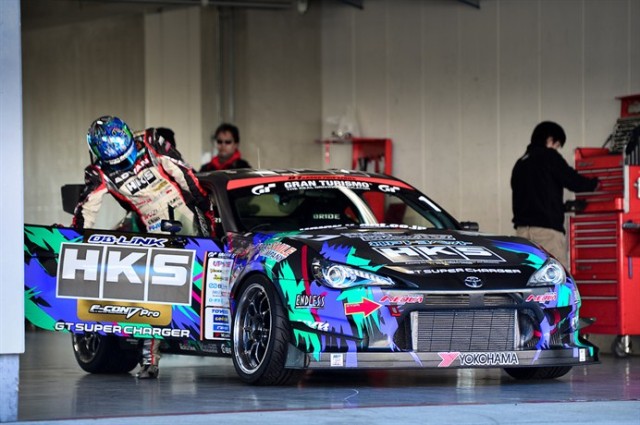Tetsuya Hibino is a household name among avid drifting fans. With years spent campaigning the AE86 Corolla, Hibino has learned to extract all the potential from the light, underpowered Toyota and is quite exacting when it comes to the setup of his drift cars. Perhaps he’s had to become so demanding just to keep in touch with the more powerful competition. He prefers a car that edges towards oversteer with castor settings that feed the wheel back to the driver during left-right transitions. In a sense, Hibino likes a drift car that does a lot of the work and is very predictable. Perhaps this is why he’s a consistent finisher in the D1 series.
In this test, Hibino gets to review a GT86 much different to his own: the HKS-supercharged GT86 driven by Nobuteru Taniguchi. This car sees its fair share of drifting and time attack and as such requires very different suspension settings. It’s not certain, but Taniguchi’s smooth style probably caters towards a setup that favors a bit of understeer. I can say with certainty, however, that this car’s multi-purpose nature requires a lot of rear traction. In order to set a 59.8 second lap at Tsukuba as this car has, good traction out of the corner is crucial.
The demanding and outspoken Hibino remarks on the difficulty transitioning between right-left flicks as this car doesn’t have the same poise sliding as his own car. Since so much of drifting is about ensuring confidence, any snappy, unpredictable behavior isn’t great. In addition, he mentions that the steering wheel doesn’t feed back into his hands during transitions as much as he would like, which is probably due to a castor setting more appropriate for road racing. Again, the likely culprit is the car’s dual-purpose setup, but it shows how the demands of drifting and grip racing are quite different. Though a compromised setup can be achieved with a good mechanic and a skilled, adaptable driver, it becomes obvious that a car designed for grip racing will have its drawbacks when going sideways. Watch and learn!






















